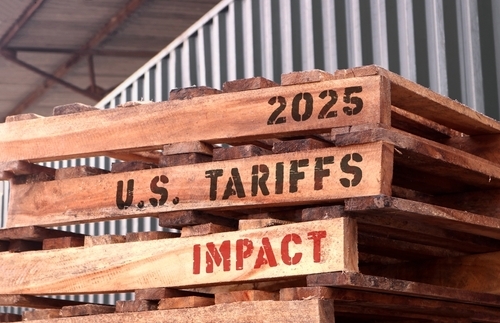TOP EXECUTIVES: David Ryan, chairman; Tom Libonate, vice chairman; Bill Sinnott, president of the executive committee
2006 U.S. NET REVENUE: $58.5 million
KEY CLIENTS: Unilever, Heineken, Campbell Soup Co., Nestle Waters, S.C. Johnson
HEADQUARTERS: Wilton, CT
david ryan and tom libonate in 1984 founded Ryan Partnership, one of the myriad marketing consultancies that line the Connecticut corridor. It’s been a steady performer with $58.5 million in 2006 net revenue and a staff of 360.
The shop built its reputation working with packaged goods brands, and launched a family of sister agencies on its own dime. But it has never acquired an existing firm, preferring to grow organically. And it didn’t have a creative director for the first three years — Ryan came up with the ideas, and other agencies executed them.
But Ryan broke out this year, earning Promo’s Agency of the Year distinction with strong campaign work for Dove, Heineken and Campbell, and 34% growth from its 2004 revenue of $45 million. It also rose to the top of our creative ranking (from No. 12 last year).
Ryan is independent both as a corporation and in spirit.
“Our mantra is, ‘No adult supervision,’” says CEO David Ryan. “We like to give people responsibilities and resources and turn them loose.”
That is best seen in Ryan’s six regional offices. Most are run by senior managers who moved from the Wilton, CT headquarters to build their own territories: Christine Nardi, Chicago; Joe Robinson, Minneapolis; Pete Tarnapoll, Columbus, OH; and Amey Harding, Toronto. Mary Perry oversees the Wilton office and John Kuendig runs Ryan iDirect.
When Ryan sees a niche, it forms a new business with its own P&L. Retail Zone opened in 2001; new-media buyer TouchPoint Communications was launched in 2005. And a new interactive division opens next month with a staff of 25.
But the biggest risk yet was Ryan’s 2005 spin-off of its channel marketing department to form Catapult Marketing Services. It took a lot of confidence to send $30 million in billings — nearly a third of Ryan’s business — out the door.
“It was an immediate success because it had clients and a slightly more contemporary positioning than Ryan Partnership,” Libonate says.
Last year, Ryan launched an experiential marketing agency called Stage.
One of Stage’s first assignments this year was on-premise sampling for Heineken’s fledgling Premium Light.
Ryan created the 2006 launch, but had to hire an outside event shop to do the sampling in bars. That was a hassle for Heineken. “It was inefficient; there were too many people for them to talk to regionally,” comments Sean Conciatore, Ryan’s vice president and creative director.
But Ryan learned its lesson. It hired its own execution team in Atlanta, Chicago, Los Angeles and Miami for the next round of sampling.
How did it persuade the brewer to go along? It turned its Wilton conference room into a bar, and invited Heineken’s brass in for a beer — and a pitch.
The current campaign, Mission Irresistible, sends sexy women in trench coats and fedoras to distribute samples to domestic light beer drinkers. They take photos and collect e-mail addresses in spy-worthy SmartPhone PDAs, then e-mail the pictures (and a link to Heineken) to those who opt in.
Then there was the effort for Unilever’s Dove. Ryan built a dedicated Internet site to house Webisodes featuring “Desperate Housewives” star Felicity Huffman in parodies of old sitcoms. The agency used the site, www.DoveNight.com, to launch Dove’s Calming Nights skincare line, with additional content from AOL and a Chief Everything Officer contest for moms. Media shop MindShare produced the sitcom episodes.
But it wasn’t alone — PR shop Edelman and shopper-marketing agency Think Integrated also pitched in. The site drew 3.5 million visits and 800,000 hits on the Webisodes, and visitors requested 720,000 product samples.
Ryan serves Dove with a team of 23 staffers from its promotion, interactive and direct departments. “I don’t know how we’d do it any other way,” says Kathy O’Brien, Unilever’s director of marketing for Dove in the U.S. “Ryan is very integrated into our team. They’re one of the agencies that we rely on quite heavily, along with Edelman and MindShare.”
pink soup cans
Then there was Campbell. Ryan was a smaller but crucial player in Campbell’s landmark pink can campaign for Kroger. The grocer wanted help supporting the Susan G. Komen Foundation during Breast Cancer Awareness Month.
Campbell’s sales rep and Kroger’s buyer came up with the idea of pinking up Campbell’s iconic red-and-white label — a first for the 110-year-old brand. “The approval had to go all the way up to our board of directors,” says Terry Atkins, director of integrated marketing at Campbell.
Ryan had been pressing Campbell for years to consider a pink-and-white can, says Ryan’s Robinson. (Ryan had done well with a Komen-inspired pink battery for Energizer, and thought Campbell could benefit from a similar tie-in.)
“Campbell always talked about how expensive it would be to change the artwork,” Robinson says. “With Kroger, there was enough volume to make it worthwhile.”
Campbell’s sales doubled to 7 million cans for the month, and half of Kroger’s stores kept the displays up for five weeks. And the effort raised $250,000 for the Komen Foundation.Atkins says the best idea that Ryan has brought to Campbell is its Souper Star Fantasy sweepstakes, now in its fifth year. On-pack codes send kids online to enter. The grand prize is an over-the-top experience: a week in a mansion, castle, private island or Hawaii.
“We kept the architecture the same and changed the story a bit,” he adds. “Every time you repeat a campaign based on past metrics, it says something about how successful the idea is.”
Ryan is now prepping Campbell’s back-to-school push behind Labels for Education. That campaign, Recess Rules, has a sweepstakes that will award one school a visit from the Harlem Globetrotters for a full day of recess.
According to Libonate, Ryan’s roots as a consultancy give it a leg up when pitching strategic planning. “Bolting on the creative was a natural extension for us,” he says. “Agencies that started as creative shops had a harder time convincing clients they could do strategic work, too.”
But it’s tough to be independent when competing against big agency networks. “Bigger agencies can source business and serve clients globally, and have stronger top-to-top client contacts,” David Ryan says. “That gives them an advantage selling ancillary services to clients. We have to work our way up the ladder, and often see business awarded to the sister agency of the ad agency.”
Ryan has been courted for acquisition. “We haven’t seen anything yet that makes us better,” Libonate says.
Meanwhile, Ryan and Libonate are mulling how to take Ryan Partnership global and expand its roster. Packaged goods work accounts for just under 45% of Ryan’s revenue. Much of its 2006 growth came from a pharmaceutical brand and new clients New Balance, MasterCard, Callaway Golf and MeadWestvaco’s office supplies. Now David Ryan has a hankering for consumer electronics and more soft goods brands.
He’s also looking for a shopper-marketing research company to buy. It would be Ryan’s first-ever acquisition. “There’s a sense of urgency as other agencies acquire research capabilities,” Ryan says. “We’d like to go a little faster up the learning curve to build this expertise.”
Who says independent old dogs can’t learn new tricks?



